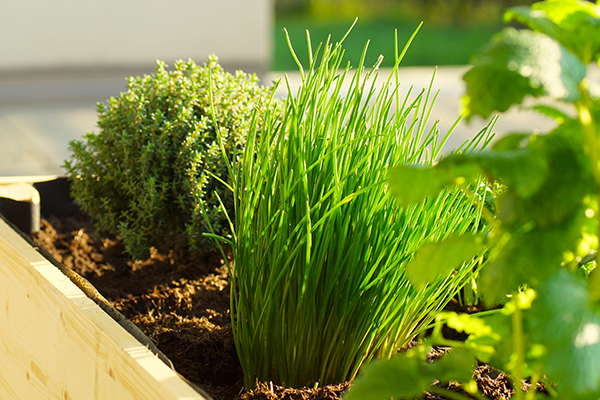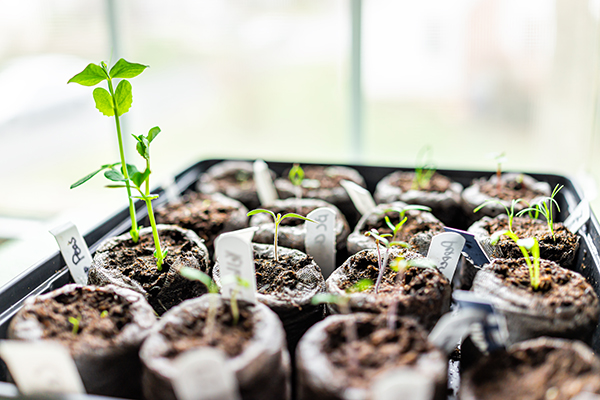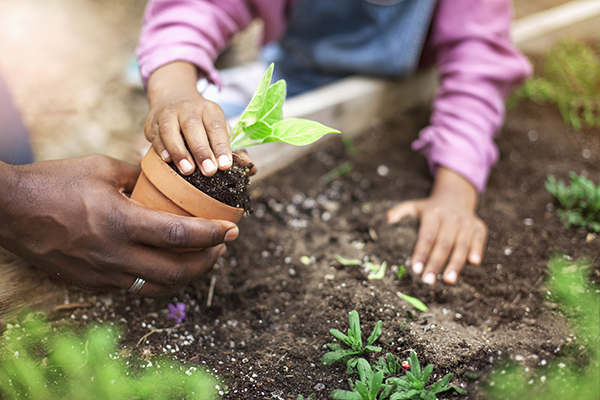We’ve seen a lot of lockdown trends come and go in the last year: sourdough starters, whipped coffee, and Tiger King, to name a few.
Thankfully, more health-focused trends, like how to start a vegetable garden, are sticking around.
According to one survey, 26% of Americans flexed their green thumb in response to the pandemic.
And interest isn’t expected to disappear once people are out of their homes, either.
“There’s something very magical about having your own garden,” says Liza Moiseeva, gardening expert and co-founder of Brightly. “Instead of going to the grocery store to pick up your favorite veggies, you have a supply right outside your door.”
If you’ve been bit by the gardening bug, follow these steps to learn how to start a vegetable garden.
1. Work With What You’ve Got
Many people think a vegetable garden needs to be a traditional in-ground garden bed in order to count.
But the truth is, a vegetable garden can be as simple as a few pots and containers on your balcony or patio, or even a combination of in-ground and potted plants.
So don’t get discouraged if your “green” space is limited to a window sill.
“Any vegetable can be grown in a home garden provided the garden site has enough light, space, and good soil,” says Julie Weisenhorn, M.Ag., associate extension professor of horticulture at the University of Minnesota.
2. Befriend Gardeners
Gardening newbies should take advantage of the free or low-cost resources in their area.
Weisenhorn suggests starting with your county’s extension master gardener website.
Many websites answer frequently asked questions, list classes taught by volunteer gardeners, and offer space to ask your own questions.
Your local garden center is another great spot to get the lowdown on home gardens. Staff members are usually avid gardeners themselves.
3. Test Your Soil
If you’re digging up your yard to build a garden, test the soil before buying your seeds or plants so you know what you’re working with.
A soil test will tell you how acidic or alkaline your soil is, as well as which nutrients might be missing.
Remember the pH scale that runs from 1 to 14?
If your soil is under 7 it’s considered acidic (also called sour), whereas above 7 is alkaline (sweet). Anything between 6.2 and 7.2 is considered nearly neutral.
This information can help you decide which plants to grow “and what amendments and fertilizer should be added to benefit your new garden plants,” Weisenhorn says.
Most prefer nearly neutral soil, but some prefer more acidic.
Some colleges, universities, and local cooperative extension offices have soil testing labs that will analyze your sample for a fee.
You can also test on your own with an at-home kit from your local home and garden store.
4. Opt for Low-Maintenance Plants
When deciding what to grow in your home garden, go for easier options your first time around.
Herbs are a great place to start.
“Most herbs grow well in full sun, tolerate dry soil, and don’t need much fertilizer,” Weisenhorn says. “Buy herb plants from a local greenhouse and plant them in containers on your deck or patio, or interplant them with flowers.”
Consider basil, rosemary, sage, cilantro, lavender, dill, chives, and fennel.
Edible flowers like pansies, anise hyssop, and daylilies are a good option for any size garden.
Meanwhile, leafy greens like kale and Swiss chard can tolerate a little shade, and many are “cut-n-come” varieties, “meaning you can cut some leaves and the plant will continue to produce,” Weisenhorn says.
If you have space, consider warm season veggies like peppers, eggplant, tomatoes, cucumbers, squash, and melons. These need large containers or a trellis.
Once you’re more comfortable with gardening, Moiseeva suggests trying your luck with trickier veggies like cauliflower, broccoli, celery, carrots, and onion.
5. Start With Plants Instead of Seeds
Once you’ve decided what to grow, it’s time to visit your local greenhouse. They can be a helpful resource as you learn how to start a vegetable garden.
You have two options: Start your vegetables from seeds, or buy plant “starts” or seedlings.
Weisenhorn suggests buying plants if you’re working with minimal real estate, and/or don’t have time to baby the seeds.
“Starting seeds takes longer,” she says. Most seeds have to spend six to eight weeks sprouting indoors in a tray before going in the ground, Weisenhorn adds.
But if space isn’t an issue and you don’t mind the challenge of starting seeds, feel free to give it a try!
Get advice from the staff at your local garden center.
6. Get the Right Tools
While you’re stocking up on plants, be sure to collect any tools and equipment you’ll need to build and care for your vegetable garden.
That includes soil and/or fertilizer.
According to Weisenhorn, the tools any gardener needs include:
- Washable gardening gloves
- A trowel
- A hand pruner
- A watering can and/or garden hose and nozzle
Other tools you may need will depend on what you’re planting.
Get stakes or poles for climbing plants like beans, cucumbers, and squash; pots or containers for small plants; and sturdy cages for tomatoes.
“If you have a big outdoor garden, you’ll probably also need a hoe in order to cultivate the soil and get rid of any weeds that pop up,” Moiseeva says.
You’ll also need a shovel if you’re digging up your yard and/or hefting a lot of soil.
7. Plant Away!
Once you have your plants, soil, tools, and know-how, it’s time for the fun part: Planting your home garden.
Fill up your pots and containers, dig your garden bed, and set up your trellis or stakes.
Be sure to set up your plants where they can get the right amount of light and shade (check the plant labels for details).
As your plants grow, remember to water and fertilize them as needed.
Keep in mind that certain plants — like tomatoes — need specific fertilizers, Weisenhorn says. Read the label and follow the directions for use.
Oh, and don’t forget to enjoy your spoils!
Want more expert nutrition tips and advice? Head over to BODNutrition.com to learn how Beachbody nutrition programs and products can help you lead a healthier lifestyle.





























